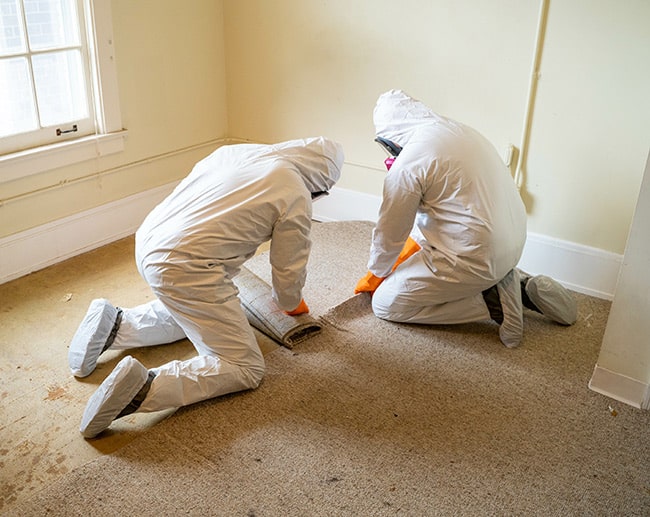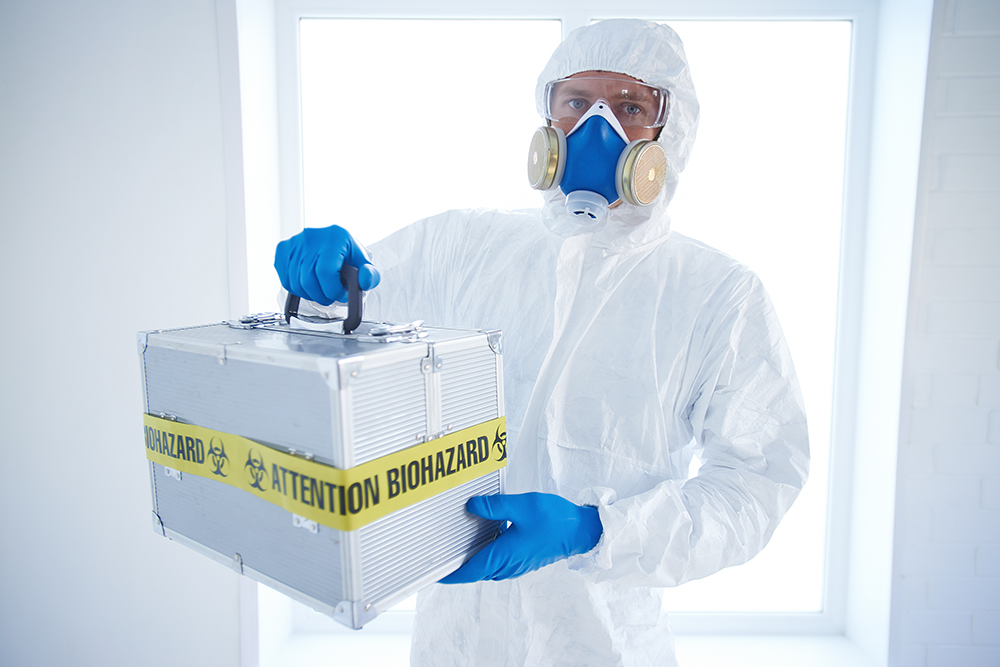Sewage Cleanup Solutions: Rapid and Safe Remediation of Contaminated Locations
Sewage Cleanup Solutions: Rapid and Safe Remediation of Contaminated Locations
Blog Article
Specialist Biohazard Cleaning and Decontamination for Blood, Bodily Fluids, and Hazardous Products
The possible health and wellness risks connected with exposure to biohazards underscore the essential demand for thorough handling and detailed cleanup. As we browse the elaborate landscape of biohazard cleaning, recognizing the subtleties of laws, conformity, and the specialized devices at play ends up being necessary in ensuring a risk-free and complete purification process.
Wellness Risks of Biohazard Direct Exposure
Direct exposure to biohazards presents significant health and wellness risks that can lead to serious repercussions for people and communities alike. Biohazards incorporate a wide variety of biological substances, including blood, physical liquids, mold and mildew, bacteria, infections, and other potentially contagious products. When individuals come right into contact with these biohazards, whether through crashes, improper handling, or ecological exposure, they deal with the risk of contracting severe ailments or diseases.
Among the main health threats associated with biohazard direct exposure is the transmission of infectious illness. Bloodborne pathogens such as HIV, hepatitis B and C, and numerous microorganisms can be present in biohazardous products, posturing a straight danger to human health. Inhaling airborne biohazards like mold and mildew spores or entering call with infected surface areas can likewise bring about breathing problems, allergic reactions, and various other adverse health and wellness impacts.
Moreover, biohazard exposure can have long-lasting wellness effects, with some diseases materializing years after the preliminary call (Blood Cleanup). For that reason, it is vital to focus on correct biohazard cleansing and decontamination to minimize these wellness dangers and make certain the safety of neighborhoods and people

Specialized Training for Biohazard Cleaning
When it involves dealing with biohazard cleaning efficiently and safely, specialized training plays a basic function in ensuring proper purification treatments are adhered to. Biohazard cleaning needs certain knowledge and skills to successfully reduce risks connected with bloodborne microorganisms, physical fluids, and unsafe products. Experts learnt biohazard cleaning undergo rigorous instruction on exactly how to safely handle, remove, and dispose of biohazardous materials to stop contamination and direct exposure.
Specialized training for biohazard cleaning covers a series of crucial topics, including correct individual safety tools (PPE) usage, bloodborne microorganism recognition, purification techniques, and contaminated materials disposal methods. Individuals learnt biohazard cleanup are equipped with the needed know-how to assess contamination degrees, determine prospective hazards, and execute appropriate cleanup treatments in conformity with regulative criteria.
Constant training and education and learning are vital in the field of biohazard clean-up to stay upgraded on the current purification modern technologies, safety and security protocols, and regulations. By purchasing specialized training, biohazard cleaning specialists can properly reply to emergency situation cleanup situations and secure both public health and wellness and the setting.
Relevance of Correct Purification Methods
Making use of appropriate decontamination techniques is critical in biohazard cleanup to efficiently remove dangerous products and decrease anonymous health threats. Efficient purification not only makes sure the elimination of noticeable traces of blood, bodily fluids, and other biohazards yet likewise targets unseen virus that may posture significant health and wellness risks if not effectively eliminated. By adhering to rigid purification methods, trained specialists can dramatically decrease the risk of direct exposure to a knockout post dangerous microbes, infections, and bacteria that might cause conditions or infections.
Proper purification strategies include the usage of specialized devices and disinfectants that are specifically designed to neutralize biohazards successfully. Detailed cleaning and disinfection of infected locations are vital to avoid the spread of pathogens and ensure a risk-free atmosphere for occupants. Additionally, the right disposal of biohazardous waste following decontamination procedures is essential in stopping contamination of other surfaces or people.

Equipment and Devices for Safe Cleaning
When dealing with blood, bodily liquids, or harmful products, biohazard cleaning experts rely on specialized gear to minimize exposure risks and thoroughly decontaminate the affected location. Additionally, biohazard cleansing sets consisting of disinfectants, absorbing products, and biohazard bags are made use of to safely include and dispose of polluted items.
Advanced cleaning tools like hospital-grade anti-bacterials, HEPA-filtered vacuum cleaners, and misting devices are used to sanitize surfaces and remove biohazards successfully. Specialized tools such as sharps containers and biohazard garbage disposal bins are utilized to securely handle sharp objects and biohazardous waste products. By making use of the best equipment and devices, biohazard cleansing experts can guarantee a detailed cleanup procedure that focuses on safety and reduces health risks for both employees and residents of the damaged space.
Rules and Compliance in Biohazard Cleaning
Appropriate adherence to policies and conformity requirements is vital in biohazard cleaning to make certain the safety of both personnel and the setting. Federal government agencies such as OSHA (Occupational Safety And Security and Health And Wellness Management) and the EPA (Epa) have established details guidelines for biohazard clean-up treatments to lessen health threats and ecological contamination. These guidelines cover a variety of elements consisting of the handling, transport, and disposal of biohazardous materials, along with the necessary training and safety devices required for employees Extra resources associated with the cleanup procedure.
Biohazard cleansing business should remain updated with these guidelines to guarantee that their operations satisfy the required safety and security criteria. Failure to conform with these guidelines can result in severe consequences, including fines, lawful activity, and threatening the wellness of individuals and the environment. By following rigid guidelines and conformity procedures, biohazard cleansing firms can effectively reduce dangers and ensure a secure and complete cleanup procedure for all events included.
Final Thought
In verdict, biohazard cleansing and purification call for specialized training, proper techniques, and adherence to policies. Exposure to blood, bodily fluids, and hazardous materials postures considerable wellness risks, making it vital to make use of the best devices and devices for secure clean-up. By following stringent procedures and standards, professionals can effectively alleviate the risks related to biohazard exposure and ensure the security of both themselves and others.
As we navigate the complex landscape of biohazard cleaning, understanding the subtleties of regulations, conformity, and the specialized tools at play comes to be vital in making certain a comprehensive and secure decontamination procedure. (Blood Cleanup)
When it comes to handling biohazard cleanup effectively and securely, specialized training plays a fundamental function in guaranteeing appropriate decontamination treatments are complied with.Making use of correct purification techniques is vital in biohazard cleaning to properly minimize and remove unsafe materials wellness dangers. In addition, biohazard cleansing sets consisting of anti-bacterials, absorptive products, and biohazard bags are utilized to safely have and get rid of of polluted things.
Federal government companies such as OSHA (Occupational Safety And Security and Wellness Administration) and the EPA (Environmental Protection Agency) have developed specific standards for biohazard cleaning treatments to reduce health threats and ecological contamination.
Report this page